Archive for March, 2010
-
Beauty of the Greater Flamingo
Posted in Wildlife A-Z | March 31, 2010 Greater flamingoes are pink beauties found in warm coastal regions of most continents. They prefer environments such as estuaries and alkaline or saline lakes. Greater flamingoes are surprisingly fluid swimmers when you take into account their appearance. They thrive in mud flats where they eat and breed. It is possible that the greater flamingo is the only tall, pink bird in a given location. Their necks are long and curved. Their bills have a characteristic black tip with a sharp bend. The shape of the bill helps them to feed on small organisms, including plankton, fish, and larvae of flies. Greater flamingoes utilize their long legs and webbed feet to move in the muddy flats and shallow water. Often, they bury their bills to take in mud and [...]
Greater flamingoes are pink beauties found in warm coastal regions of most continents. They prefer environments such as estuaries and alkaline or saline lakes. Greater flamingoes are surprisingly fluid swimmers when you take into account their appearance. They thrive in mud flats where they eat and breed. It is possible that the greater flamingo is the only tall, pink bird in a given location. Their necks are long and curved. Their bills have a characteristic black tip with a sharp bend. The shape of the bill helps them to feed on small organisms, including plankton, fish, and larvae of flies. Greater flamingoes utilize their long legs and webbed feet to move in the muddy flats and shallow water. Often, they bury their bills to take in mud and [...] -
What is the definition of a national park?
Posted in North America | March 31, 2010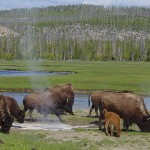 National Park is an area which is set aside by national government as well as the state government which is done to preserve its natural environment. National Park is no ordinary area, which will be chosen and declared as National Park. The area which is under National Park is less under human’s exploitation and away from its occupation and cities. Mostly the area declared under National Park has some scenic view, scientific significance, geographical interest etc, which is why it is being protected by humans from exploitation and abuse from humans only. A thing to be noted is national park is a place where there are more animals and plants then humans, so therefore this places the arena under protection of national authority. It is basically [...]
National Park is an area which is set aside by national government as well as the state government which is done to preserve its natural environment. National Park is no ordinary area, which will be chosen and declared as National Park. The area which is under National Park is less under human’s exploitation and away from its occupation and cities. Mostly the area declared under National Park has some scenic view, scientific significance, geographical interest etc, which is why it is being protected by humans from exploitation and abuse from humans only. A thing to be noted is national park is a place where there are more animals and plants then humans, so therefore this places the arena under protection of national authority. It is basically [...] -
Gettysburg National Park
Posted in North America | March 30, 2010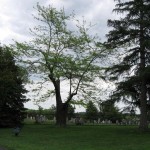 Gettysburg National Park is situated at the site of the Battle of Gettysburg. The battle commenced in July 1863 during the American Civil War. Gettysburg National Park is situated just outside the town of Gettysburg, Pennsylvania. It lies in close proximity to the Gettysburg National Cemetery. The cemetery is dedicated to Abraham Lincoln. The park history commemorates the battle of Gettysburg and the soldiers who laid their lives during the Civil War. Nearly 7000 soldiers lost their lives and close to 30,000 were wounded. The citizens of Gettysburg provided adequate care to the soldiers. To provide recuperation for the soldiers a huge tent-city was erected to the east of the town. This served as a point for accumulation of medical supplies [...]
Gettysburg National Park is situated at the site of the Battle of Gettysburg. The battle commenced in July 1863 during the American Civil War. Gettysburg National Park is situated just outside the town of Gettysburg, Pennsylvania. It lies in close proximity to the Gettysburg National Cemetery. The cemetery is dedicated to Abraham Lincoln. The park history commemorates the battle of Gettysburg and the soldiers who laid their lives during the Civil War. Nearly 7000 soldiers lost their lives and close to 30,000 were wounded. The citizens of Gettysburg provided adequate care to the soldiers. To provide recuperation for the soldiers a huge tent-city was erected to the east of the town. This served as a point for accumulation of medical supplies [...] -
Carlsbad Caverns National Park
Posted in North America | March 30, 2010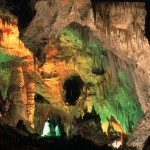 Guadalupe Mountains line the Texas-New Mexico border. The peaks rise to heights of more than 8000 feet. This is in stark contrast to the surrounding desert land. The mountains have two national parks within their range: Guadalupe and Carlsbad Caverns. Guadalupe has rocky peaks and scenic valleys all around. Varied wildlife resides here. Carlsbad Caverns is one of the oldest cave systems present in the world. Its fame has spread every nook and corner of the planet. Carlsbad Caverns National Park is a full-day drive from the major attractions of the South West. The journey is worth the effort as the park has many underground chambers, which are 250 feet deep. These chambers have awesome formations of many colors and shapes. Long roads are a common [...]
Guadalupe Mountains line the Texas-New Mexico border. The peaks rise to heights of more than 8000 feet. This is in stark contrast to the surrounding desert land. The mountains have two national parks within their range: Guadalupe and Carlsbad Caverns. Guadalupe has rocky peaks and scenic valleys all around. Varied wildlife resides here. Carlsbad Caverns is one of the oldest cave systems present in the world. Its fame has spread every nook and corner of the planet. Carlsbad Caverns National Park is a full-day drive from the major attractions of the South West. The journey is worth the effort as the park has many underground chambers, which are 250 feet deep. These chambers have awesome formations of many colors and shapes. Long roads are a common [...] -
California National Parks
Posted in North America | March 29, 2010 There are seven California National Parks. Golden Gate National Park Golden Gate National Park is one of the seven California National Parks. The park has chronicled 200 years of history. The park is reminiscent of Native American culture, Spanish Empire Frontier, and the Mexican republic. It has also seen the maritime history, California Gold Rush, evolution of coastal fortifications, and the development of San Francisco. Joshua Tree National Park This park offers spectacular views. On close examination, the park reveals a splendid variety of flora and fauna. The land has been shaped by strong winds, torrential rain, and extreme weather. Starry nights and unbelievable geological features make the park more enticing. Wildflower season commences [...]
There are seven California National Parks. Golden Gate National Park Golden Gate National Park is one of the seven California National Parks. The park has chronicled 200 years of history. The park is reminiscent of Native American culture, Spanish Empire Frontier, and the Mexican republic. It has also seen the maritime history, California Gold Rush, evolution of coastal fortifications, and the development of San Francisco. Joshua Tree National Park This park offers spectacular views. On close examination, the park reveals a splendid variety of flora and fauna. The land has been shaped by strong winds, torrential rain, and extreme weather. Starry nights and unbelievable geological features make the park more enticing. Wildflower season commences [...] -
Rocky Mountain National Park: Unending galore of vistas
Posted in North America | March 29, 2010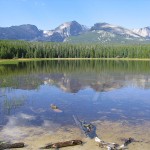 Climb the mountains and get their good tidings. Nature’s peace will flow into you as sunshine flows into trees. The winds will blow their own freshness into you, and the storms their energy, while cares will drop off like autumn leaves. - John Muir Rocky Mountain National Park, is the galore of panoramic views and unending galore of vistas. In the hues of cerulean blue permanently attached are the craggy peaks which are extending serrated, protrusions from the down the earth. Down below, beautiful meadows with swaying wild flowers, dotted and spread throughout like pattern of intricate quill. Deep canyons are plunging through lush, foliage and verdant green forests. As rivers stream down and gushes through mountainside and take breathe [...]
Climb the mountains and get their good tidings. Nature’s peace will flow into you as sunshine flows into trees. The winds will blow their own freshness into you, and the storms their energy, while cares will drop off like autumn leaves. - John Muir Rocky Mountain National Park, is the galore of panoramic views and unending galore of vistas. In the hues of cerulean blue permanently attached are the craggy peaks which are extending serrated, protrusions from the down the earth. Down below, beautiful meadows with swaying wild flowers, dotted and spread throughout like pattern of intricate quill. Deep canyons are plunging through lush, foliage and verdant green forests. As rivers stream down and gushes through mountainside and take breathe [...] -
National Park Service: Savior of National Parks
Posted in North America | March 26, 2010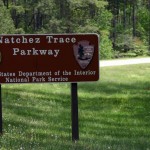 The National Park Service, or NPS, is a United States of America’s federal agency. National Park Service manages all national parks and many of the national monuments along with areas that have title designations for historical or conservation properties. National Park Service was created on 25th August in the year 1916, when the Senate and Congress gave an approval through the National Park Service Organic Act. National Park Service is under the jurisdiction of Federal Government of the United States, also an agency of United States Department of the Interior. And National Park Service headquarter is in Washington DC. It is a federal executive department, who is headed by Secretary of the Interior. Secretary of the Interior is a Cabinet [...]
The National Park Service, or NPS, is a United States of America’s federal agency. National Park Service manages all national parks and many of the national monuments along with areas that have title designations for historical or conservation properties. National Park Service was created on 25th August in the year 1916, when the Senate and Congress gave an approval through the National Park Service Organic Act. National Park Service is under the jurisdiction of Federal Government of the United States, also an agency of United States Department of the Interior. And National Park Service headquarter is in Washington DC. It is a federal executive department, who is headed by Secretary of the Interior. Secretary of the Interior is a Cabinet [...] -
Arches National Park
Posted in North America | March 26, 2010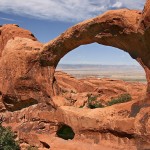 Arches National Park is a red rock wonder that contains some of the most magnificent and splendid landscapes on the planet. The park is home to the largest concentration of sandstone arches. The park has nearly 2000 arches spread over 76,518 acres. Besides the arches, there are plenty of other geological formations. Some of them include sandstone fins, huge balanced rocks, towering pinnacles, and spires. They obscure visitors to the background as they explore the park and its hiking trails. The rich history of geology has been unearthed due to geologic faulting. The ways to explore the park are as varied as the type of formations. Travelers need to devote a couple of hours to get a good introduction within the park. Those wishing to explore [...]
Arches National Park is a red rock wonder that contains some of the most magnificent and splendid landscapes on the planet. The park is home to the largest concentration of sandstone arches. The park has nearly 2000 arches spread over 76,518 acres. Besides the arches, there are plenty of other geological formations. Some of them include sandstone fins, huge balanced rocks, towering pinnacles, and spires. They obscure visitors to the background as they explore the park and its hiking trails. The rich history of geology has been unearthed due to geologic faulting. The ways to explore the park are as varied as the type of formations. Travelers need to devote a couple of hours to get a good introduction within the park. Those wishing to explore [...] -
Great Smoky Mountains National Park
Posted in North America | March 25, 2010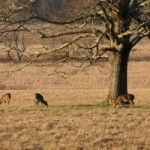 The Cherokee used word “Shaconage” to describe the Great Smoky Mountains National Park, which means “Blue, like smoke. In the entire Eastern United States, Great Smoky Mountains National Park is the largest protected land. The conserve has diverse variety of animals as well as plants species. Not only tourists or traveler are attracted to this park but also scientists from all over the world come here to discover new species of flora and fauna in these ancient mountains. The Great Smoky Mountains are a mountain range that rises by the side of the border of the southeastern United States, Tennessee-North Carolina. The mountains are substitute range of the Appalachian Mountains, which form part of the Province of Blue Ridge Physiographic. [...]
The Cherokee used word “Shaconage” to describe the Great Smoky Mountains National Park, which means “Blue, like smoke. In the entire Eastern United States, Great Smoky Mountains National Park is the largest protected land. The conserve has diverse variety of animals as well as plants species. Not only tourists or traveler are attracted to this park but also scientists from all over the world come here to discover new species of flora and fauna in these ancient mountains. The Great Smoky Mountains are a mountain range that rises by the side of the border of the southeastern United States, Tennessee-North Carolina. The mountains are substitute range of the Appalachian Mountains, which form part of the Province of Blue Ridge Physiographic. [...] -
Bryce Canyon National Park – Mesmerizing Landscape
Posted in North America | March 25, 2010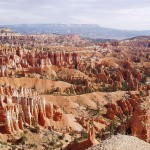 Bryce Canyon, the name itself is very confusing like the word Canyon, as Bryce is not carved by river, but the freeze-thaw cycles. Until now this huge carved stones are neither flattering nor adequate. For now, even you would agree with the people who say ‘Bryce is a Bryce’. But read further to known what is Bryce Canyon? In the southwestern Utah, is situated a small national park known as Bryce Canyon National Park. This park was created in 1928 by the Mormon Pioneer Ebenezer Bryce. The geology of the Bryce is very unique where you will find sequence of horseshoe-shaped amphitheaters stones in the southern Utah, which starts from the Paunsaugunt Plateau’s eastern border. The colorful limestone rocks have been shaped by the very forceful [...]
Bryce Canyon, the name itself is very confusing like the word Canyon, as Bryce is not carved by river, but the freeze-thaw cycles. Until now this huge carved stones are neither flattering nor adequate. For now, even you would agree with the people who say ‘Bryce is a Bryce’. But read further to known what is Bryce Canyon? In the southwestern Utah, is situated a small national park known as Bryce Canyon National Park. This park was created in 1928 by the Mormon Pioneer Ebenezer Bryce. The geology of the Bryce is very unique where you will find sequence of horseshoe-shaped amphitheaters stones in the southern Utah, which starts from the Paunsaugunt Plateau’s eastern border. The colorful limestone rocks have been shaped by the very forceful [...]


